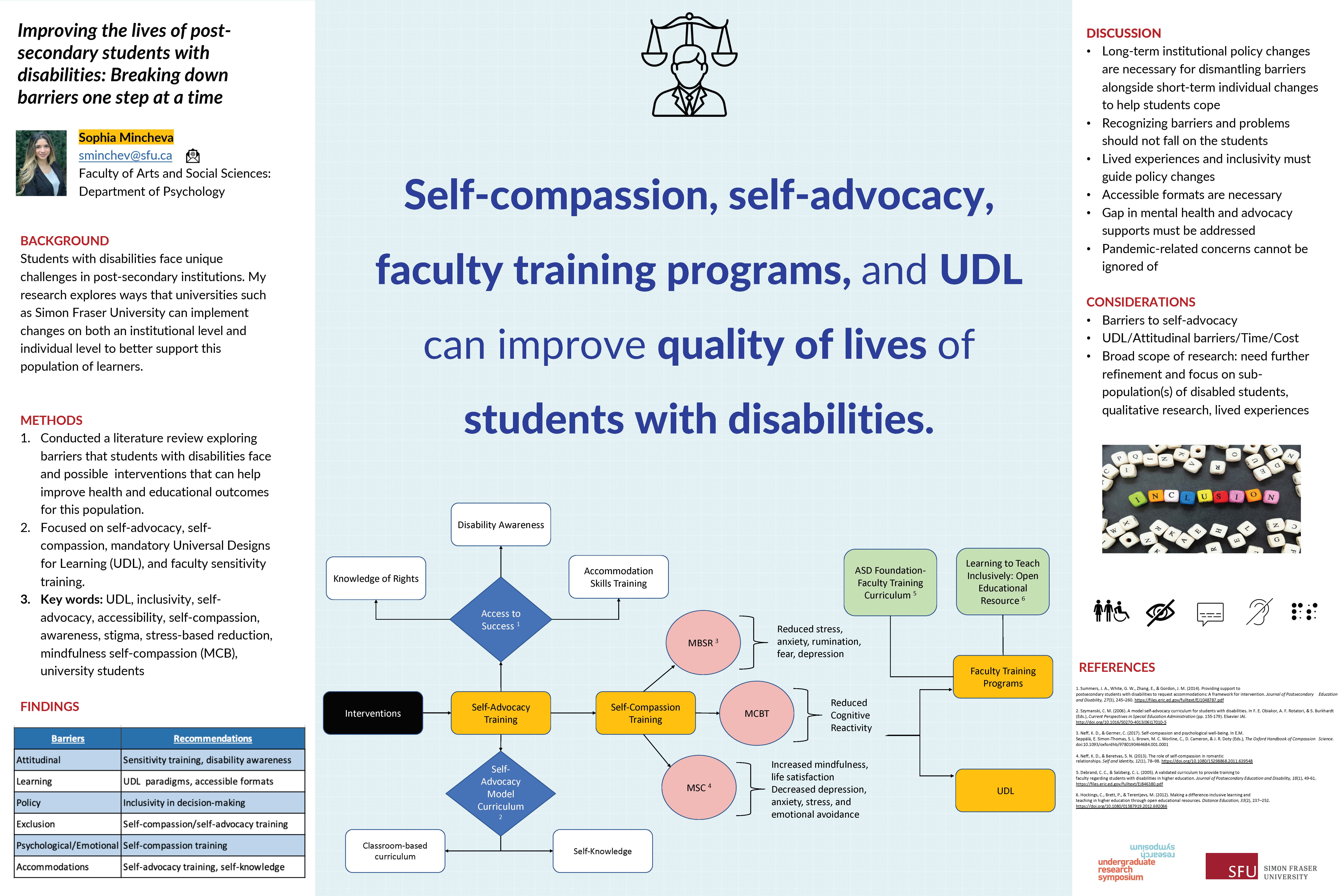Improving the lives of post-secondary students with disabilities: Breaking down barriers one step at a time
Main Article Content
Abstract
Historically, students with disabilities have achieved poorer academic performance in post-secondary education due to marginalization, exclusion, and unequal access to education. They face compounded difficulties in the absence of self-advocacy, self-compassion, and self-knowledge skills required to cope with attitudinal, environmental, policy, communication barriers and the lack of appropriate services. There is also disparity in accessible learning for disabled and non-disabled students due to the existing one-size-fits-all curriculum. By presenting a literature review on the scope of problems students encounter in university, and proposed recommendations, my hope is to help bridge the gap and provide solutions for SFU to implement going forward. To help students attain critical skills in disability awareness, advocacy, and skills training, the Centre for Accessible Learning (CAL) should offer a self-advocacy curriculum program such as Access to Success (Summers et al., 2014). These skills will provide students with a sense of empowerment, autonomy, and inclusion in decision-making processes. Due to the current lack self-compassion training workshops tailored for disabled students in post-secondary, there is an imperative need for Health and
Counselling to provide such supports. Mindfulness-based therapeutic (MCBT), mindfulness-based stress-reduction (MBSR), and Mindfulness Self-Compassion (MSC) interventions are empirically proven to reduce depression, and anxiety in students with disabilities (Neff & Germer, 2017). By making universal designs for learning (UDL) and disability sensitivity training programs, such as ASD Foundation Faculty Training Curriculum, a requirement, this will ensure inclusive practices and eliminate significant learning barriers that most visibly impact disabled students and their psychological well-being (Debrand & Salzberg, 2005).
Article Details

This work is licensed under a Creative Commons Attribution-NonCommercial-NoDerivatives 4.0 International License.

